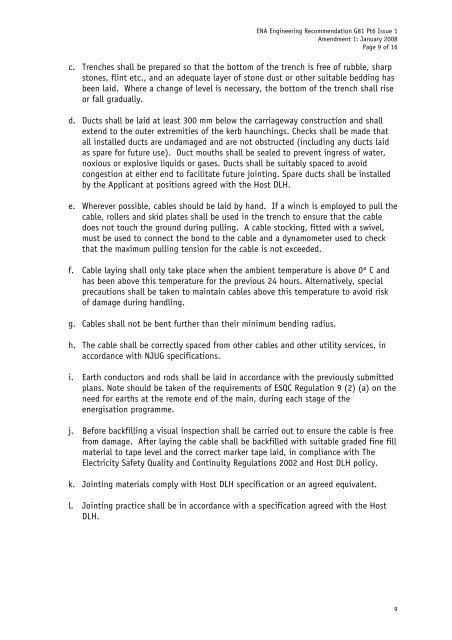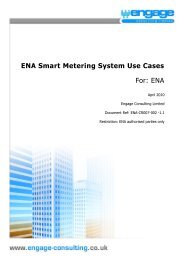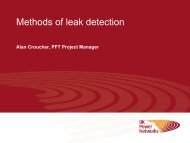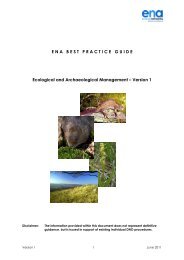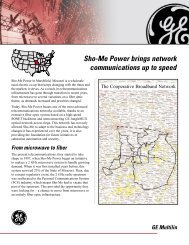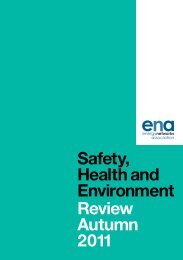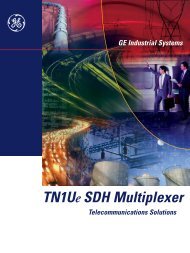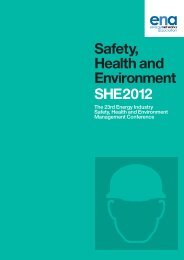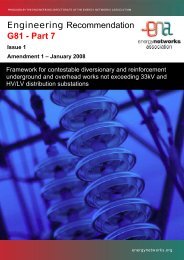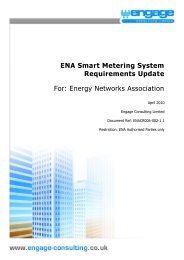Engineering Recommendation G81 - Part 6 - Energy Networks ...
Engineering Recommendation G81 - Part 6 - Energy Networks ...
Engineering Recommendation G81 - Part 6 - Energy Networks ...
You also want an ePaper? Increase the reach of your titles
YUMPU automatically turns print PDFs into web optimized ePapers that Google loves.
ENA <strong>Engineering</strong> <strong>Recommendation</strong> <strong>G81</strong> Pt6 Issue 1<br />
Amendment 1: January 2008<br />
Page 9 of 16<br />
c. Trenches shall be prepared so that the bottom of the trench is free of rubble, sharp<br />
stones, flint etc., and an adequate layer of stone dust or other suitable bedding has<br />
been laid. Where a change of level is necessary, the bottom of the trench shall rise<br />
or fall gradually.<br />
d. Ducts shall be laid at least 300 mm below the carriageway construction and shall<br />
extend to the outer extremities of the kerb haunchings. Checks shall be made that<br />
all installed ducts are undamaged and are not obstructed (including any ducts laid<br />
as spare for future use). Duct mouths shall be sealed to prevent ingress of water,<br />
noxious or explosive liquids or gases. Ducts shall be suitably spaced to avoid<br />
congestion at either end to facilitate future jointing. Spare ducts shall be installed<br />
by the Applicant at positions agreed with the Host DLH.<br />
e. Wherever possible, cables should be laid by hand. If a winch is employed to pull the<br />
cable, rollers and skid plates shall be used in the trench to ensure that the cable<br />
does not touch the ground during pulling. A cable stocking, fitted with a swivel,<br />
must be used to connect the bond to the cable and a dynamometer used to check<br />
that the maximum pulling tension for the cable is not exceeded.<br />
f. Cable laying shall only take place when the ambient temperature is above 0º C and<br />
has been above this temperature for the previous 24 hours. Alternatively, special<br />
precautions shall be taken to maintain cables above this temperature to avoid risk<br />
of damage during handling.<br />
g. Cables shall not be bent further than their minimum bending radius.<br />
h. The cable shall be correctly spaced from other cables and other utility services, in<br />
accordance with NJUG specifications.<br />
i. Earth conductors and rods shall be laid in accordance with the previously submitted<br />
plans. Note should be taken of the requirements of ESQC Regulation 9 (2) (a) on the<br />
need for earths at the remote end of the main, during each stage of the<br />
energisation programme.<br />
j. Before backfilling a visual inspection shall be carried out to ensure the cable is free<br />
from damage. After laying the cable shall be backfilled with suitable graded fine fill<br />
material to tape level and the correct marker tape laid, in compliance with The<br />
Electricity Safety Quality and Continuity Regulations 2002 and Host DLH policy.<br />
k. Jointing materials comply with Host DLH specification or an agreed equivalent.<br />
l. Jointing practice shall be in accordance with a specification agreed with the Host<br />
DLH.<br />
9


